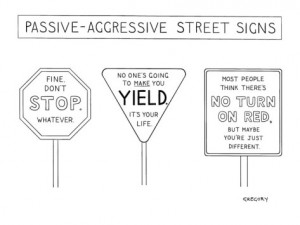What defensive communication style do you adopt to change interpersonal relations?
Change: love it, hate it, want it, resist it; want it on our terms, at our pace . . . We all react differently, and our own reactions will vary depending on the circumstances, mood and people we’re interacting with.
When we’re triggered, our communication style can become defensive, whether in a passive, passive-aggressive or aggressive way. As a result we may initiate or react to change in a way that lacks respect and understanding. This then turns our focus on how change was instigated and received, rather than on the underlying reasons.
So how do we communicate when we are being defensive, and why? And how can we state our feelings and needs in an assertive and mutually respectful manner?
HOW CHANGE IN INTERPERSONAL RELATIONS CAN AFFECTS US:
Some people thrive on change; adapt well, welcome it and create it, while others prefer stability and little change, or small steps and a slow pace. And of course there are many variations in between.
That’s because three factors affect our different reactions:
- Our survival instincts of fight, flight, freeze
- Our self-esteem
- Our defensive communication style
Our reactions and defensiveness can then escalate existing or buried tensions.
Change generally comes about as a result of unmet needs. By needs I mean the things we can’t do without, for example: love, respect, job security etc. as opposed to wants, which are more temporal in nature and satisfy a desire.
Change then occurs when the status quo no longer works for us. This may relate to:
- A relational dynamic and way of communicating
- A structure and method (e.g. who does the washing up and how) and
- Changes in resources – less money, loss of a job, of a car etc. – which can affect our dynamics.
If our fears rise as we approach this pivotal point, the idea of starting the change process can suddenly seem easier said than done.
So whatever our specific circumstances, our apprehensions can tap into our self-esteem and identity as a ‘good’ person; our sense of equality and deserving; our fear of rejection and our core beliefs.
Each of these factors can trigger our fight, flight and freeze instincts and give rise to defensiveness or bravado, which manifest in power games and in our communication styles:
- Aggressive = Fight
- Passive-Aggressive = Fight and Flight (interchangeably)
- Passive = Flight and Freeze (interchangeably)
Our instigation and reaction to change will therefore vary accordingly.
No one style is better or worse than the others and we might find ourselves engaging in each in different situations – or none of these, of course!
Invitation: while it may be easier to point to people you know in the descriptions below see if you can also identify your own behavioural traits.
THE THREE STYLES IN ACTION:
If we adopt an aggressive communication style, we may:
- Make demands, ultimatums and threats of: “Take it or leave it!”
- Put our needs above those of others, or deny theirs altogether
- Cut relations as a result of non-compliance
- We may react to their requests by belittling their needs and using punishing behaviour like: silence, withdrawing a promise, ignoring the request, or by severing relations
If we adopt a passive-aggressive style we may:
- Use guilt, shame and a victim-martyr stance to gain compliance, or
- Withdraw and change our behaviour, as we opt for the “actions-speak-louder-than-words” approach
- If confronted about it we may then deny any changes with excuses like: “I’m just tired / busy” etc. (While driven by the fear of direct confrontation, these excuses can create confusing ‘mind-games’ for the recipient).
- Our reaction to a request may be to begrudgingly go along with it but communicate our resistance with verbal snipes, delays, bad work, or by sulking. We may also become aggressive.
If we adopt a passive style, we may:
- Do nothing: not enact change at all and hope things will sort themselves out: “There’s no point…” or, “It’s ok, it’s not that bad…”
- This ‘put up and shut up’ response will happen until we finally explode and let all our grievances out at once
- We may react to changes by complying to a request or demand to keep the peace, and/or sulk and complain to others
Each of these styles can vary based on the individual, though all equally perpetuate power games and imbalances in relationships.
Understanding the needs, fears and vulnerabilities triggering these defences can move us towards truly empowered and mutually respectful communication.
HOW TO INITIATE CHANGE ASSERTIVELY AND WITH MUTUAL RESPECT:
By asking ‘What’s Needed?’ we move towards a problem-solving place in a way that owns our perspective and feelings without blame.
This question is then directed at three levels:
- What are my needs? (e.g. Respect, independence, happiness, work, rest..)
- What needs to change? (Communication style, structure, distribution…)
- How does it need to change?
By answering from a place of self-responsibility, we can take control of meeting our own needs, wherever possible, and also change our own contributing behaviour. Doing this increases our personal power and moves us towards speaking assertively with mutual respect, personal integrity and greater understanding.
We can do this by speaking in the ‘I’; which means that we own our feelings, perspectives and interpretations about how something affected us, and state our needs.
This formula makes up an “I-statement”:
- Feeling “I feel….”
- Situation observed “When x happens…”
- Need “I need…”
- Request (positive and negotiable)
E.G. “I feel resentful when I come home and see that the washing up still hasn’t been done. I need there to be equality and mutual respect in the house chores. I’d like for us to find a way that suits us both.”
Remembering this formula in the moment may not always be easy. The best approach is to speak in the ‘I’ and challenge the behaviour, rather than judging them as a person (e.g. “You’re a lazy slob!”). When describing a feeling, focus on the feeling itself (resentful) rather than your interpretation (e.g. disrespected). Requests need to be phrased positively and realistic, freely turned down or negotiated.
Using a respectful tone and language are undoubtedly an added bonus!
Change may or may not be easy or wanted, but how we enact it and communicate our needs can either lead to conflict or greater understanding. While others may not like our requests, we will have treated them with respect and been truer to ourselves, and them, in the process.






